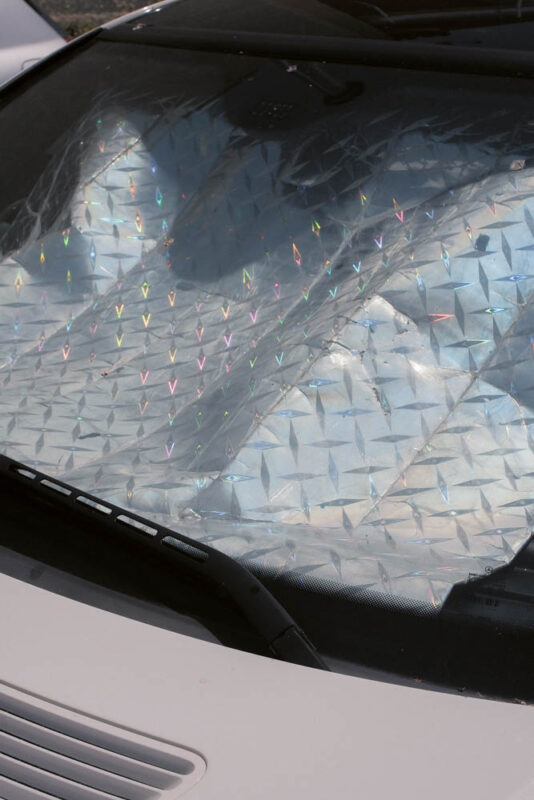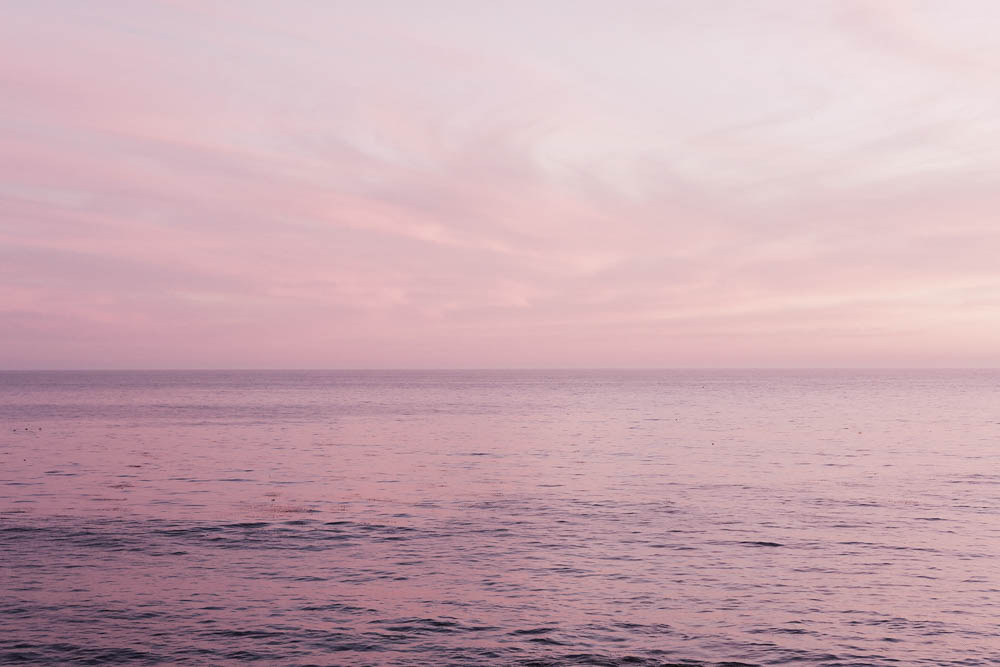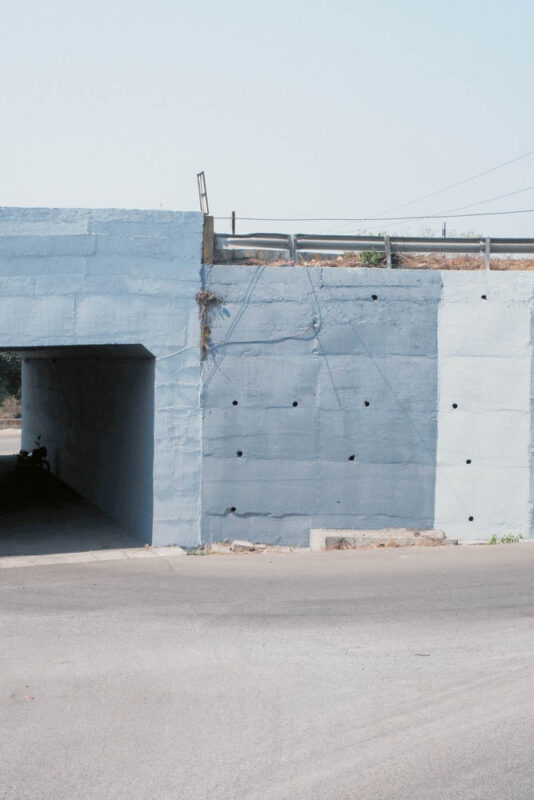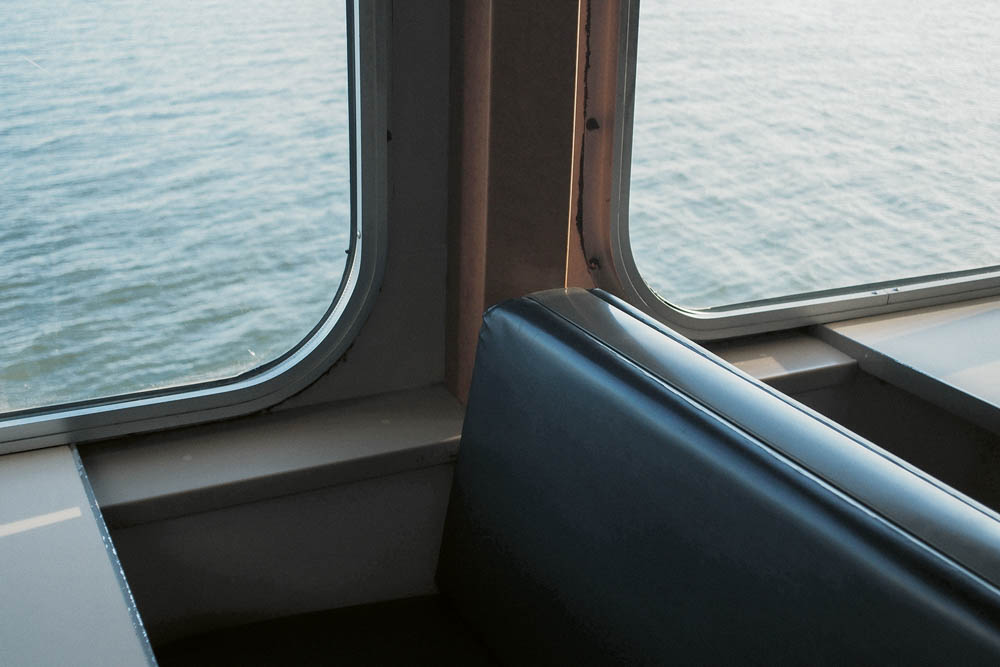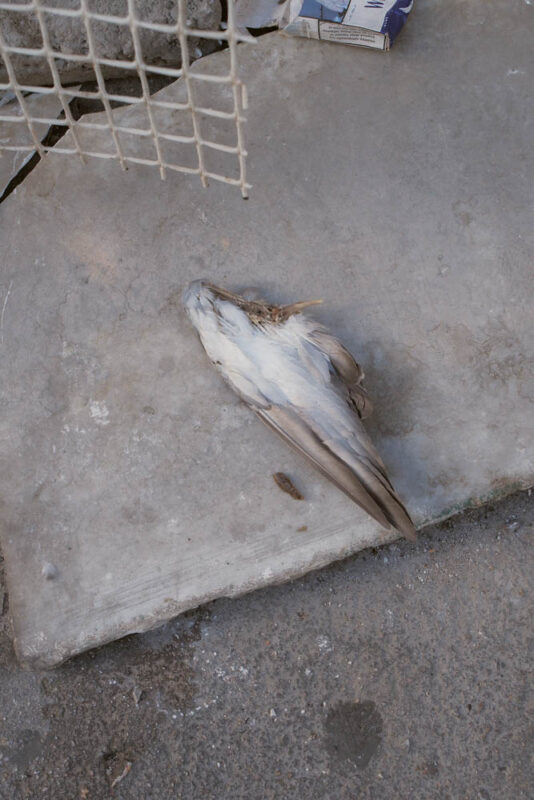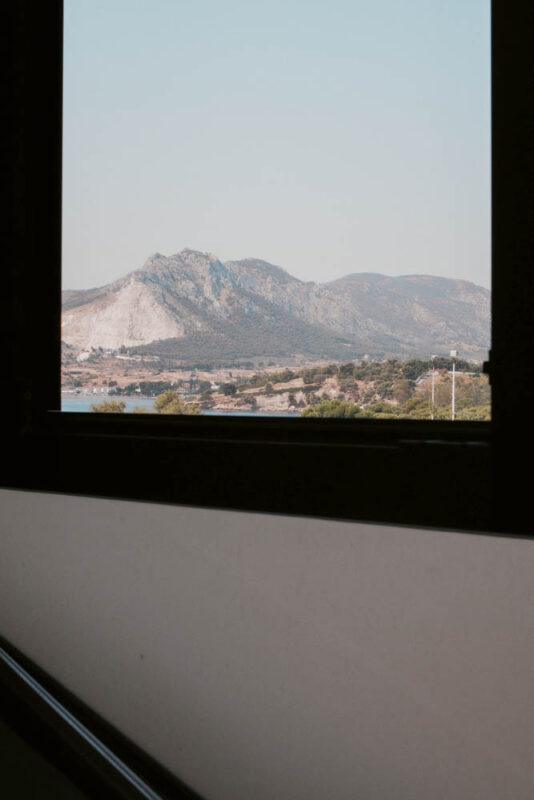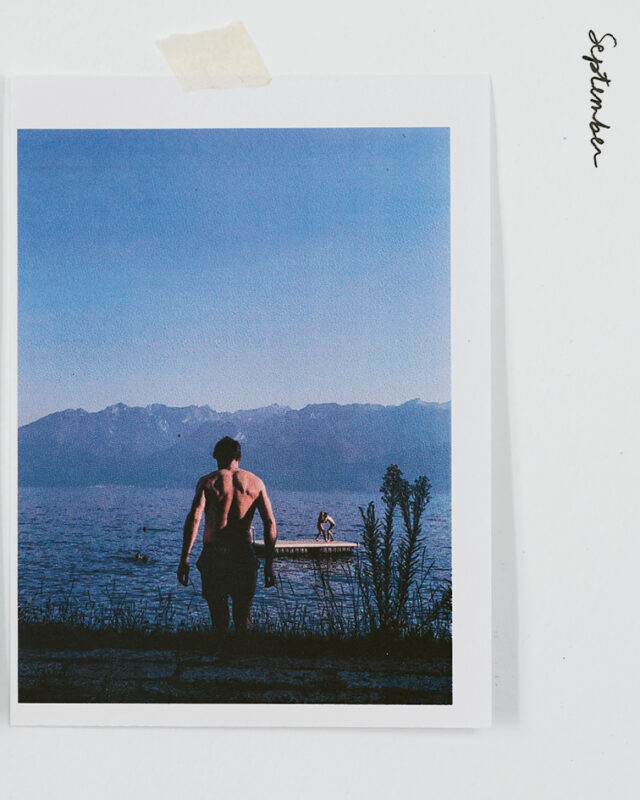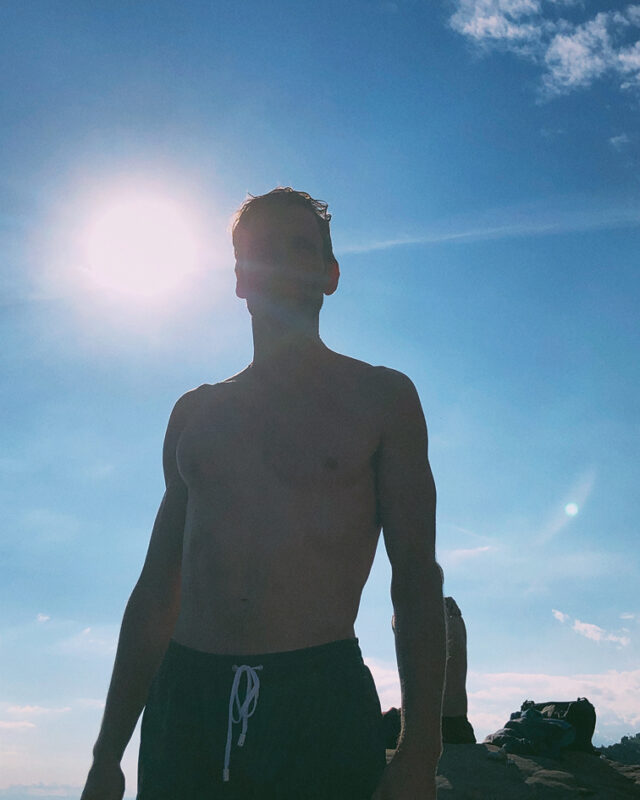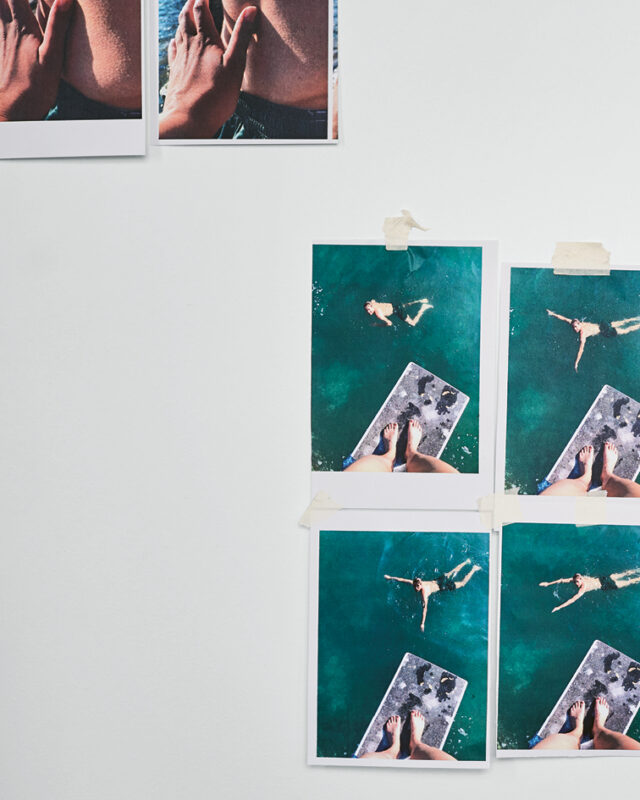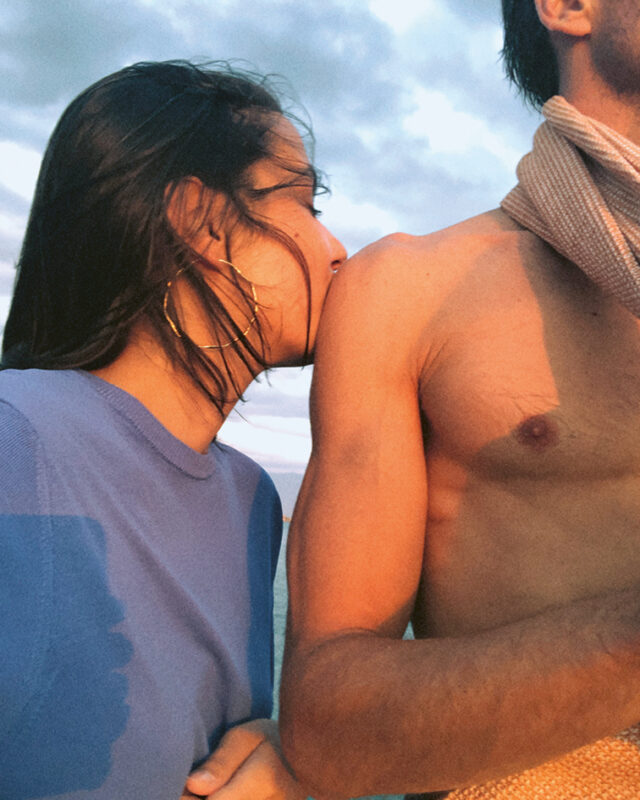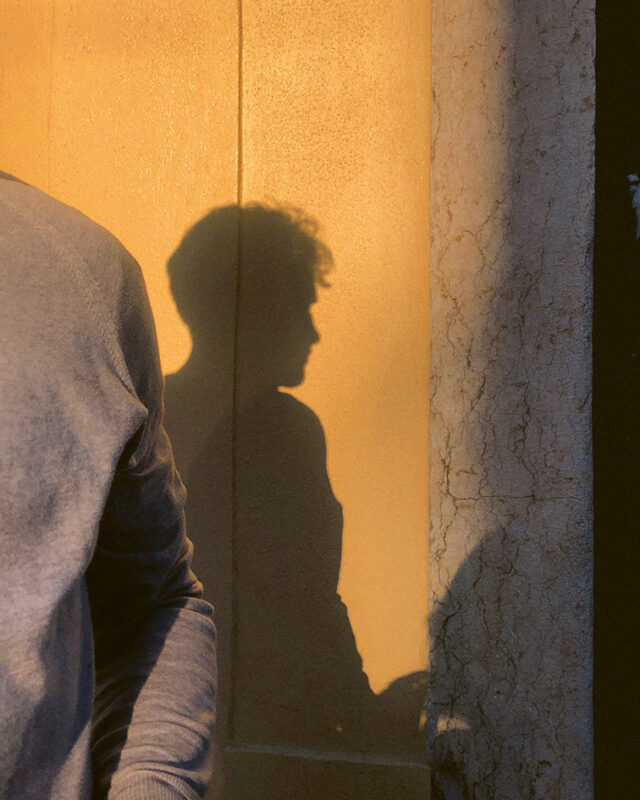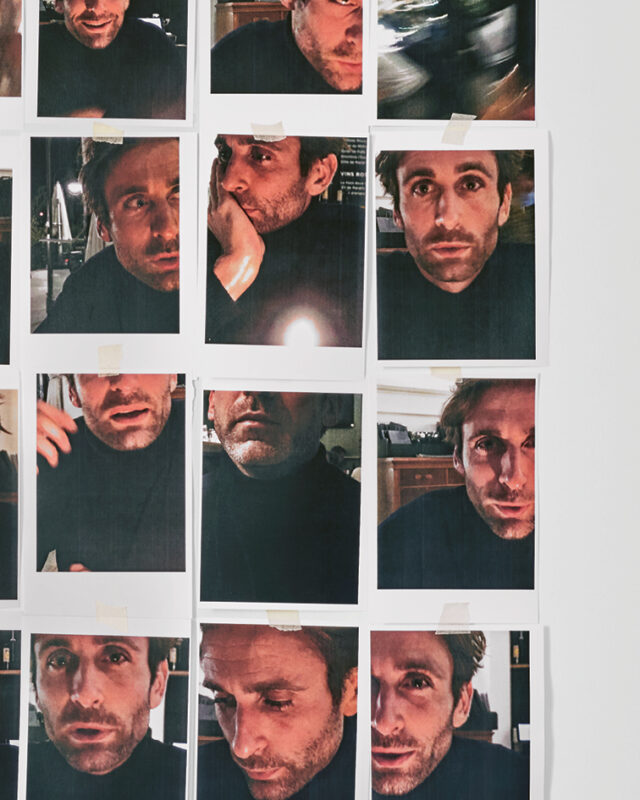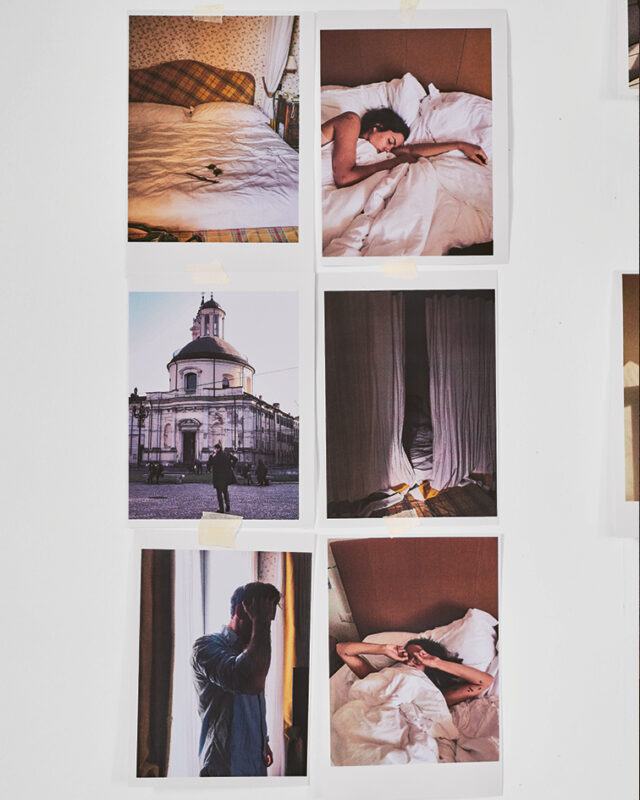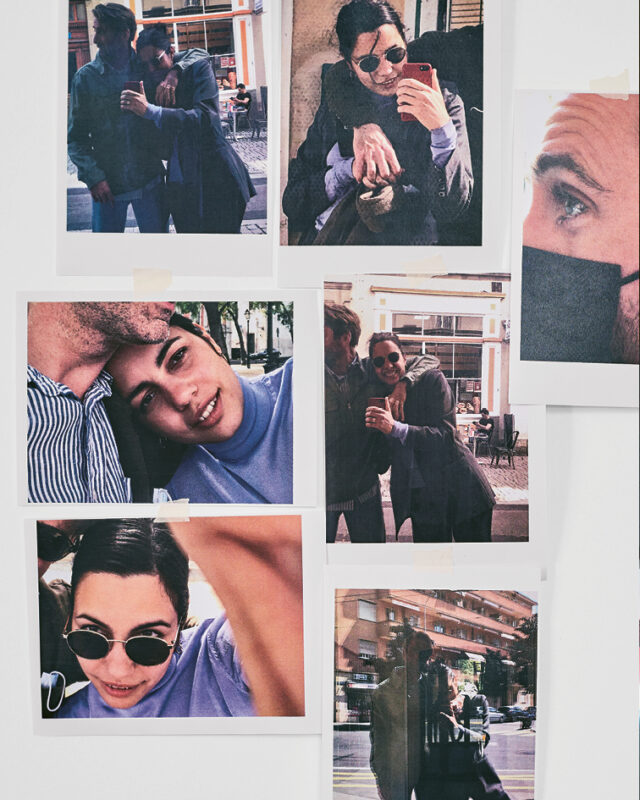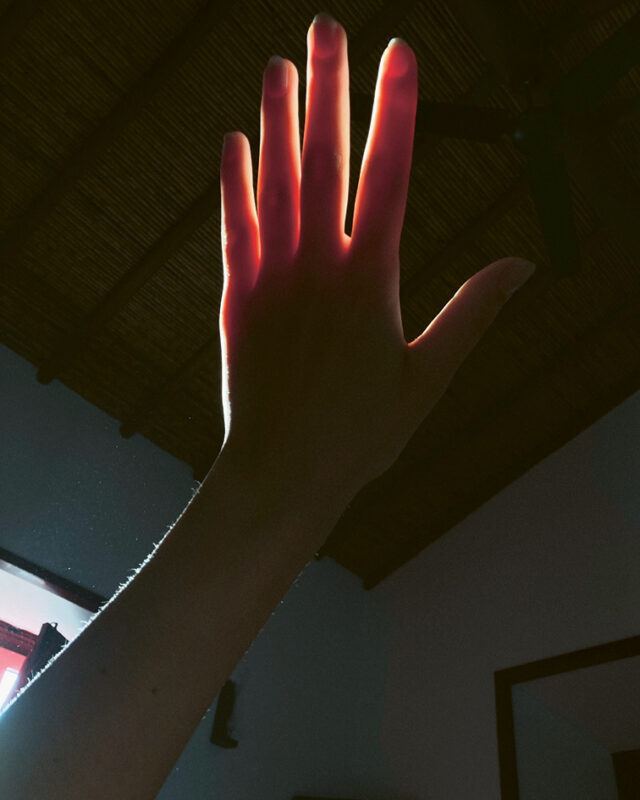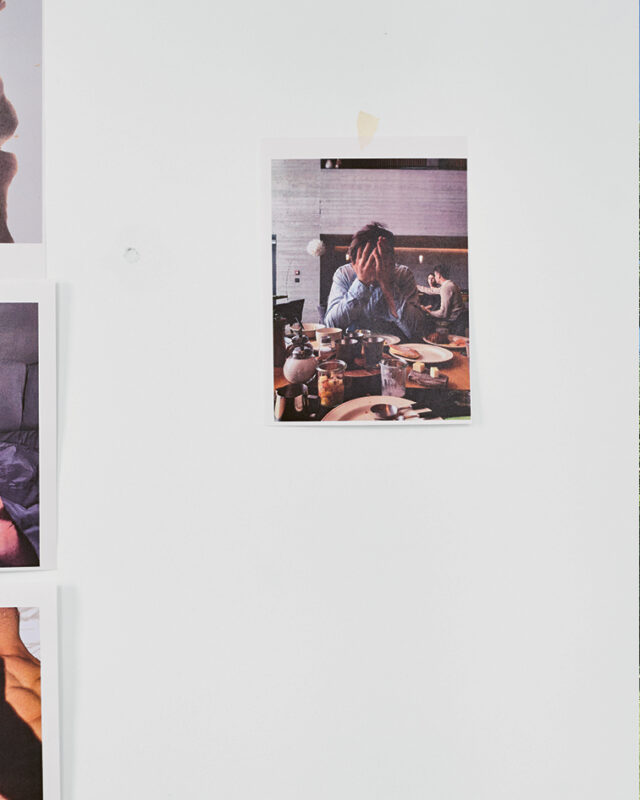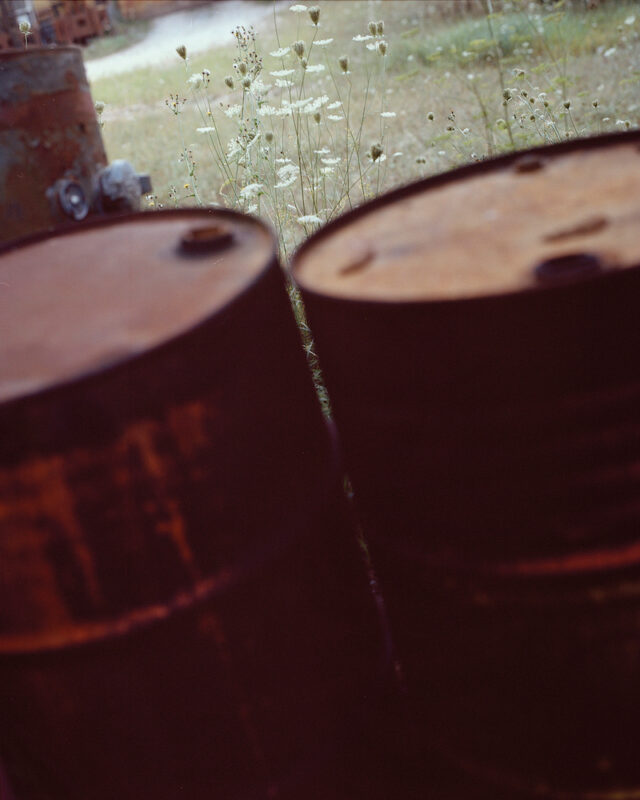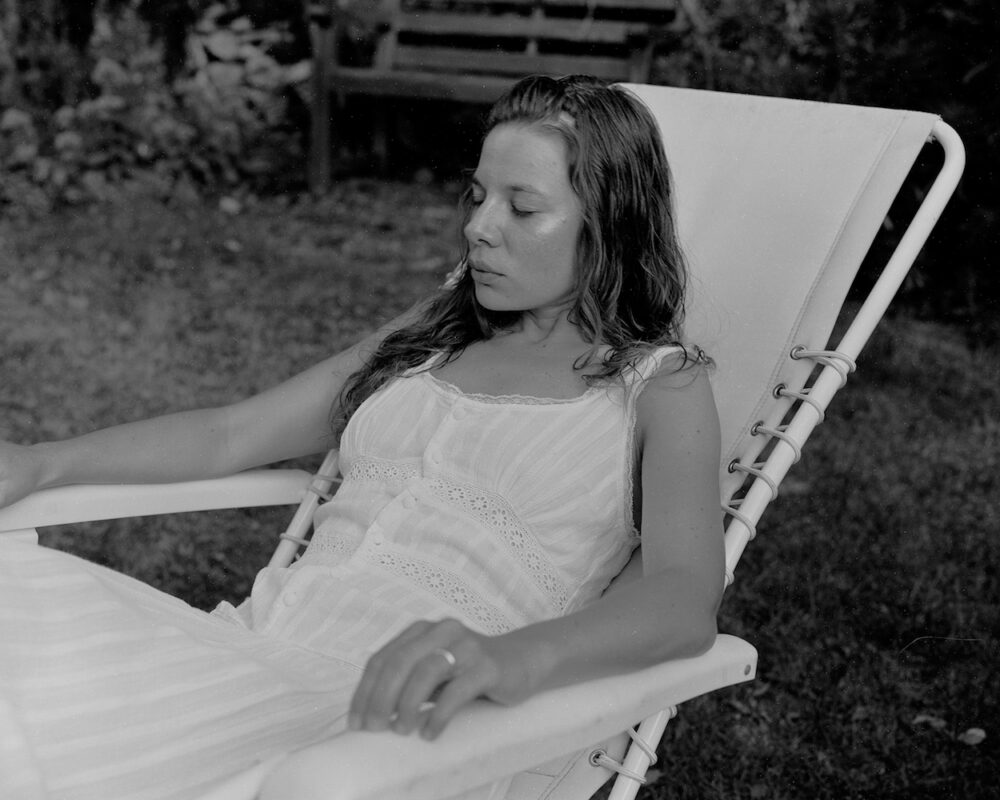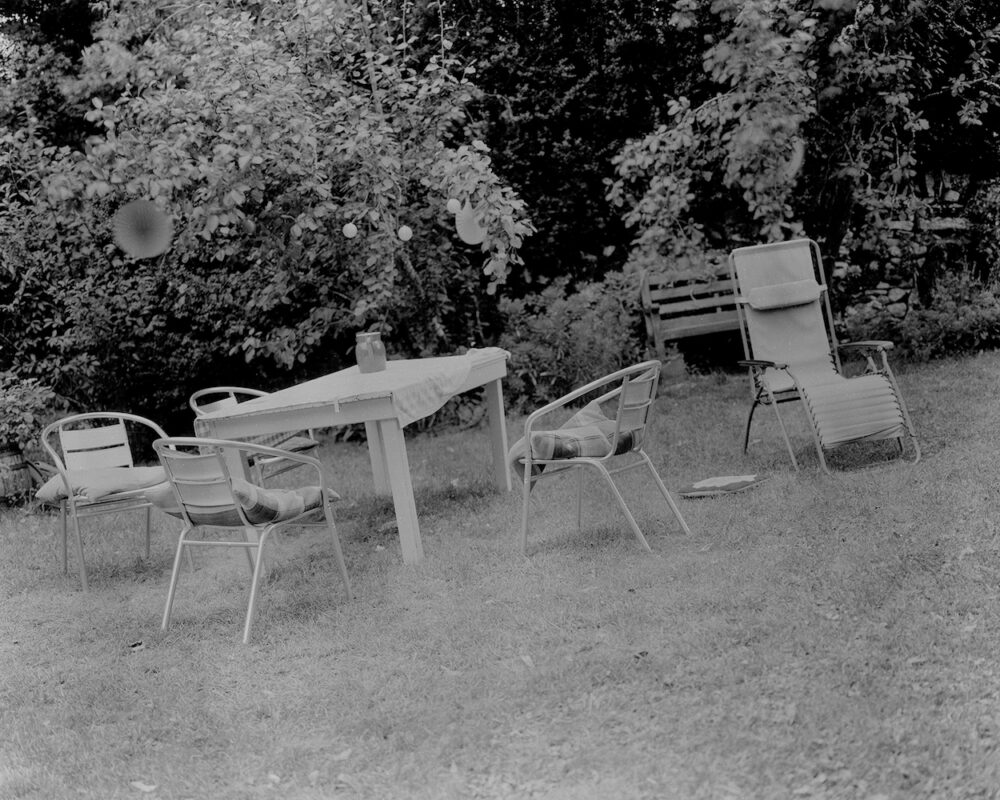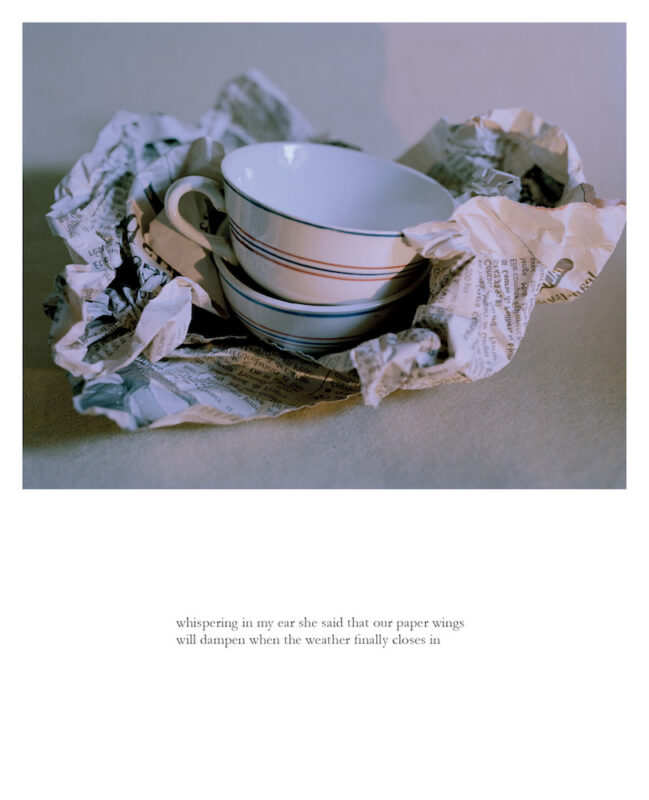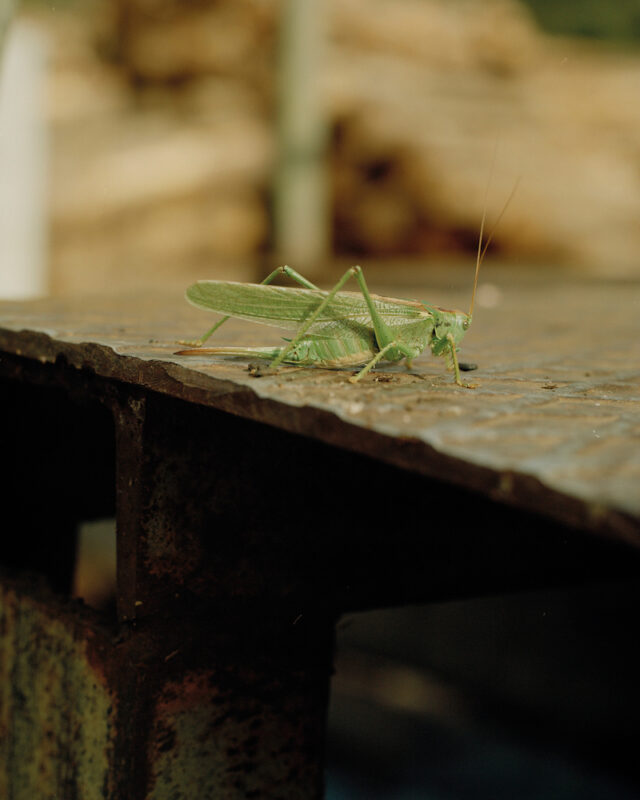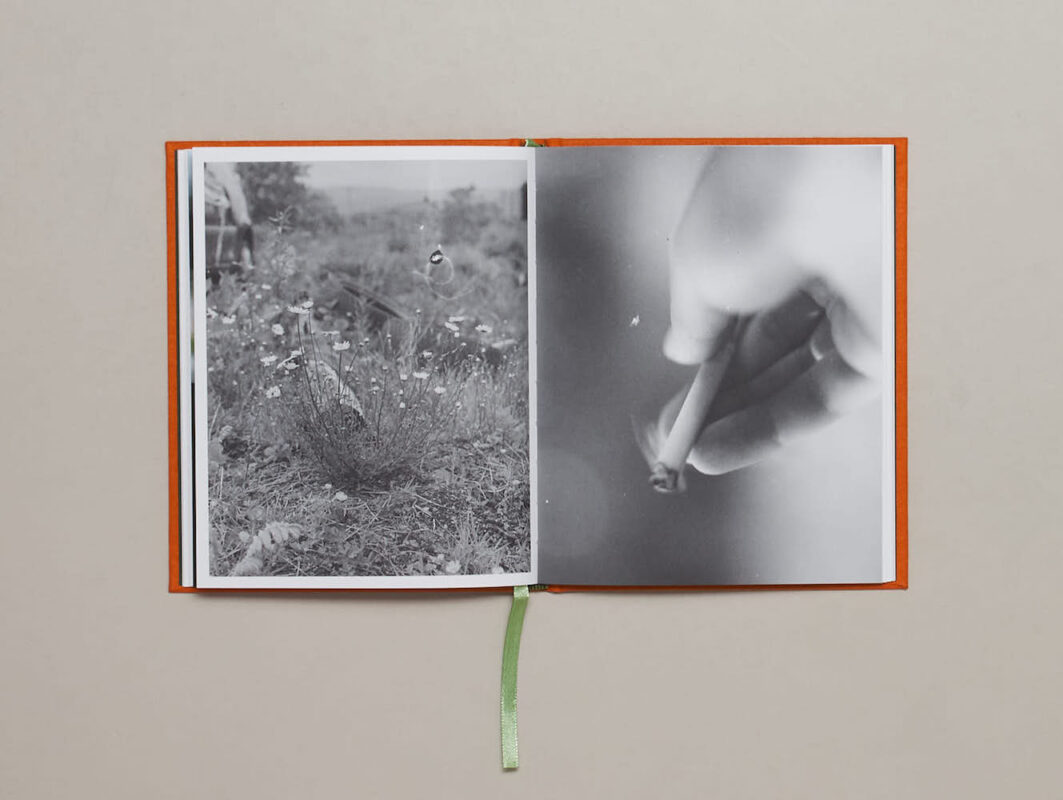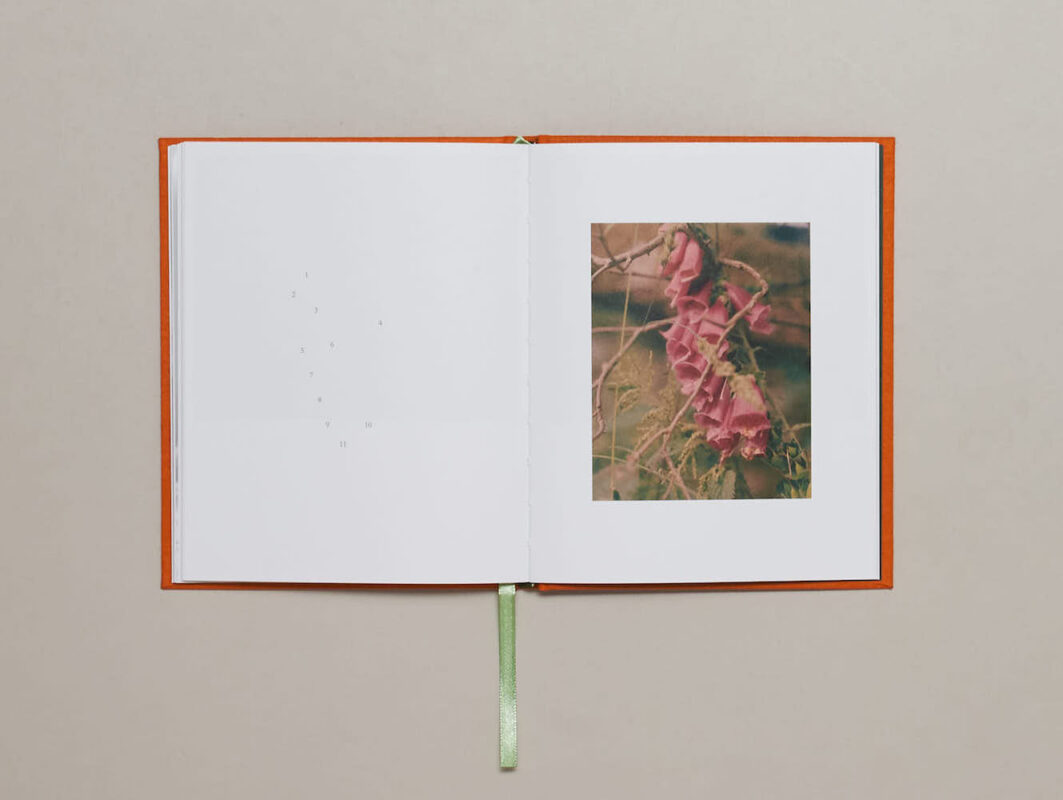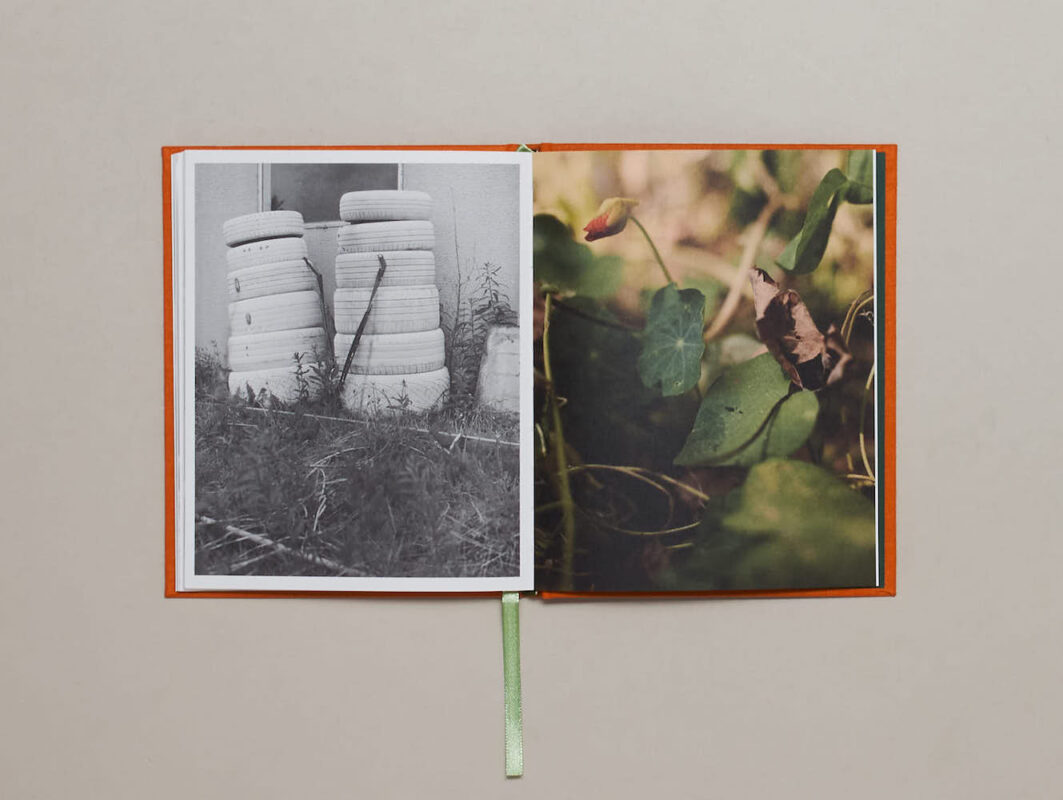Lydia Goldblatt
Fugue
Interview by Anneka French
Bones, skin, flowers, mirrors, golden light and heavy shadow are sensitively woven throughout Fugue, a new title by Lydia Goldblatt that explores her transition into motherhood while simultaneously carrying the loss of her own mother, she explains to Anneka French. Published by GOST, the book brings together tender photographs and fragments of text that touch upon this complex period within Goldblatt’s life. Her work, also part of a recent solo presentation with Robert Morat Galerie at Photo London 2024, was the toast of the fair.
Anneka French | Interview | 30 May 2024
Anneka French: Let’s start with the cover and the title. Can you tell me more about the musical notation and the word ‘fugue’?
Lydia Goldblatt: The cover is pink and the end papers red – I wanted it to be bodily – and it features the final bars of the last unfinished Fugue by Johann Sebastian Bach who wrote The Art of Fugue, unfinished because he died. The image is taken from Bach’s original annotated manuscript in his handwriting. I like the notes floating untethered.
AF: The state of being unfinished is important to your work. Can you say more about the timeframe the book covers?
LG: Yes. Things exist in a continuum but it covers a four-year period around the becoming of, and the losing of, a mother. I wanted to make the book across those years because they are a significant marker of change and transition. When I started making the pictures, I didn’t know how long it would be until I stopped. I needed that length of time to draw out the themes and relationships, to allow it to grow and evolve.
AF: Did you always envisage a book? What were your thoughts at the start?
LG: To even start making is a massive hurdle. I didn’t make pictures for a good three or so years after having children. I did commissions but didn’t, and couldn’t, grapple with anything further. When I start making photographs, I don’t think about an outcome because otherwise I might not start at all. That said, once I began making and editing these, I was intuitively putting the pictures into book form. It felt like a narrative.
AF: The texts in the book exists in different formats and registers. In ‘Mother Tongue’, one part feels stern and directive while the other is more intimate and detailed. Could you tell me about these?
LG: ‘Mother Tongue’ is split into two voices, almost a call and response, but not quite. The first is the things that I might say to my children, the second is my internal voice. This text sits at the centre of the book because it’s about a very difficult emotion, rage, that is extremely hard to articulate but also fundamental to the experience encapsulated in the work. The rest of the texts are structured similarly to the photographs because the fragments don’t build a complete narrative. Instead, they allude to elements and go back and forth in time. Non-linear time is really integral to this work. A daily sense of time is underpinned with deeper time and the writing allows me to articulate emotions held in the pictures.
AF: Were the texts written intuitively?
LG: The texts and photographs were made separately. I made a lot of the photographs and then put them away in order to start the writing. I didn’t want to write to the photographs. I knew they were linked but I didn’t know how I’d edit it together. There were specific memories I wanted to explore in the writing but I just started and it wasn’t overly planned.
AF: ‘Fugue’ has quite different definitions in the worlds of music compared to psychiatry – harmony as opposed to disassociation.
LG: I think it has been a useful word. In domestic life, there are many interweaving strands with changes and repeats that build the idea and the feeling of family. I wanted to allude to these repeating strands to build a crescendo and a tune of some kind. It holds within it both intimacy and distance. Once the work became the object [the book], it became more claustrophobic and quite intense. The other element to the work is loss – a loss of memory and a loss of self, or a dissociative state. Grief and the transition to motherhood is captured in the word ‘fugue’ very simply. In Fugue, there’s a fleeing and a running towards – a push and pull.
AF: Yes. Photographs where children are balanced on the edge of furniture and hands reach out to wave or stretch. How do you approach photographing fast-moving children as opposed to a collection of objects that are, of course, still?
LG: With the moving children, there’s something playing itself out. The stacks of dishes by the sink or the Tupperware by the stairs are things that I walked past, thought about and then came back to, piles unconsciously created within the context of the house. There are other still lives that I set up to refer to a discussion or to set up symbolism. Further still, there are other objects that belong to my mother or grandparents – the little mirror and the scissors, and the broken statue which is both an object belonging to my family but also a symbolic setting up of a fracture. Another picture shows teeth which are mine and my sister’s. We found them in mum’s dressing table. They connect to fragility, preciousness and the macabre.
AF: It’s the cyclical nature of things happening, of things waiting to happen. Something common in early motherhood is a shrinking of the world down to your immediate surroundings. Fugue comes from your experiences but the pandemic is bound up in the timeline of the book too.
LG: Lockdown gave me the reason not to talk myself out of making the work. I didn’t really know I’d started making it. We scattered my mum’s ashes a few weeks before lockdown, and it was one of those days where you don’t get another chance. So I took my camera and kind of started things off. In lockdown, I experienced a clarifying of all the things that I’d been feeling. I had a reason not to put my camera down, knowing that this was a very particular phase, and motherhood and grief alike allowed me to explore those feelings. I could just let them go, let them run. This being said, the work is not just mine. It’s about me – it holds me and holds my children – but it can’t be of them because it’s me making the work. There’s a strange balance beyond and outside of me. The work has to hold other people’s experiences too, otherwise there’s just no point. ♦
All images courtesy the artist and GOST. © Lydia Goldblatt
Fugue is published by GOST.
—
Lydia Goldblatt is a British photographic artist based in London. Her work has been at the National Portrait Gallery, London, Somerset House, London, the National Museum, Gdańsk, Poland, the Felix Nussbaum Haus, Osnabrück, Germany, and the GoEun Museum of Photography, Busan, South Korea. Her first book, Still Here (Hatje Cantz, 2013), is held in the collection of the Victoria and Albert Museum National Art Library, London, and her work is held in public and private collections including the National Portrait Gallery and The Women’s Library, London. Her work appears in publications including Guardian Saturday, Financial Times, The Telegraph, Sunday Times Magazines, New Statesman, The New Yorker, De Zeit and Wallpaper*. Goldblatt received the GRAIN Projects Artist Commission in 2020 to develop Fugue, and received an award for her portrait from the series in the Taylor Wessing Portrait Prize.
Anneka French is a Curator at Coventry Biennial and Project Editor for Anomie, an international publishing house for the arts. She contributes to Art Quarterly, Burlington Contemporary and Photomonitor, and has had written and editorial commissions from Turner Prize, Fire Station Artists’ Studios, TACO!, Grain Projects and Photoworks+. French served as Co-ordinator and then Director at New Art West Midlands, Editorial Manager at this is tomorrow and has worked at galleries including Tate Modern, London, and Ikon, Birmingham.
Images:
1- From the series Fugue © Lydia Goldblatt
2- Bone, from the series Fugue © Lydia Goldblatt
3- Windows, from the series Fugue © Lydia Goldblatt
4- Eden in the Garden, from the series Fugue © Lydia Goldblatt
5- Lick, from the series Fugue © Lydia Goldblatt
6- From the series Fugue © Lydia Goldblatt
7- Twist, from the series Fugue © Lydia Goldblatt
8- Folds, from the series Fugue © Lydia Goldblatt
9- From the series Fugue © Lydia Goldblatt
10- Supernova, from the series Fugue © Lydia Goldblatt
11- Pedestal II, from the series Fugue © Lydia Goldblatt
12- Paper Bird, from the series Fugue © Lydia Goldblatt













